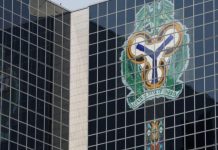Across the world, interest rates are lowered in order to stimulate economic growth. The reason is that lower financing costs can encourage borrowing and investing in the affected economy. But when rates are too low – compared to the rate of headline inflation, they can spur excessive growth and subsequently jack up inflation, reducing purchasing power and undermining the sustainability of economic expansion – in the case of Nigeria, economic recovery. This explains why monetary authorities as the Monetary Policy Committee (MPC) of the Central Bank of Nigeria (CBN) is slow to cut interest rates.
When the Central Bank of Nigeria (CBN) Governor, Mr. Godwin Emefiele reportedly restated the position of the apex bank that the rates may not be cut until next year, most people were not surprised. Emefiele specifically said that during the course of 2020 we may be able to see rates cut, “but I can’t see that until we begin to see the numbers showing inflation is trending downward.”
Nigeria’s inflation rate has been above the target band of 6 per cent to 9 per cent for more than four years. That has made it a but difficult to cut the rates. Emefiele and his team at the CBN have repeatedly said that they are determined to lower interest rates to boost economic growth. But that cannot be done in isolation in order not to wipe out the recent gains of the economy. Gross domestic product expanded 1.9 per cent year-on-year in the second quarter, according to the National Bureau of Statistics.
“Unfortunately it’s been sticky coming downwards as soon as it hit about 11 per cent,” Emefiele said, adding that “The Monetary Policy Committee would love to see it at about 9 per cent before beginning to aggressively think about easing.”
But Emefiele is right anyway. Monetary policy easing at this time may trigger capital outflows, which would put pressure on the naira. If that is allowed to happen, the currency would be weakened beyond the budgeted exchange rate benchmark, while implementation of the 2019 budget is constrained. Already, there is a pressure on reserve accretion caused by the relatively weak crude oil price at the international market.
Various indicators point to the fact that the Nigerian economy is on the right part of growth. But some sectors are still experiencing very poor growth rate, a situation that continues to make it difficult for the economy to recover fully from a contraction in 2016.
The Monetary Policy Committee showed its response to the declining inflation rate the first time in about three years in March this year – by 50 basis points – from record-high 14 per cent to 13.5 per cent. In that March MPC, the MPC voted to adjust the MPR from 14 per cent to 13.5 per cent; retain the Asymmetric Corridor of +200 and -500 basis points around the MPR; retain the CRR at 22.5 per cent and retain the Liquidity Ratio at 30 per cent.
The CBN committee based its decision on some economic incidences at that time. Although headline inflation has dropped from 11.3 per cent at the time of the downward review to 11.02 per cent in September, GDP being in positive trajectory consistently for about five quarters and foreign reserves standing at $45 billion, the authorities still believe the business class clamouring for rates cut should wait for the target six to nine per cent before the rates are reduced.
Although loosening would encourage the flow of credit to the private sector, the MPC rightly believes, however, that doing so will highly reverse the gains recorded so far, even though it also shares the sentiment that tightening would depress investors’ confidence and weaken output growth.
The fear is that the moderation in the inflation rate is not sustainable as prices are expected to pick up ahead of the Christmas and New Year festive season. And that is a legitimate fear. Normally, low inflation has many benefits which help improve the economic performance of the economy such as increased investment. However, if there is a supply-side shock to the economy as it is currently in Nigeria, reducing the monetary rates at this time to keep touch with the current inflation rate may cause increased unemployment and lower growth which is very undesirable.
As rightly noted by the MPC at its September meeting, loosening interest rate now would result in increased system liquidity and hence, heighten inflationary tendencies in the economy. In particular, the MPC was of the view that loosening would drive growth in consumer credit but without a corresponding adjustment in real sector output. The Committee was also convinced that increased liquidity and interest rate moderation would result in exchange rate pressures as money supply rises.
As regards the option to hold, the MPC opined that the option requires a clear understanding of the quantum and timing of liquidity injections into the economy, before deciding on possible adjustments to the stance of monetary policy. The Committee was also of the opinion that retaining the current position of policy offers pathways to appraising the effects of the suit of heterodox monetary policy to encourage credit delivery to the real sector, especially in the light of the subsisting implementation of the Loan-to-Deposit Ratio policy.
However, there are those who are of the view that signaling through loosening by a marginal reduction, considering the lowering inflation rate would serve to manage the sentiments in the capital markets owing to the wider spread in yields in the EMDEs, relative to the advanced economies. Moreover, the real interest rate in the country would still remain positive.
Those who hold such view say policy easing would further uphold the federal government’s commitment to promoting strong growth by way of encouraging credit flow to the productive sectors of the economy and creation of jobs for her unemployed workforce.
Most economic experts believe that keeping inflation low to a single digit has the capacity to aid economic stability, which many say encourages saving, investment, economic growth, and helps maintain international competitiveness.







